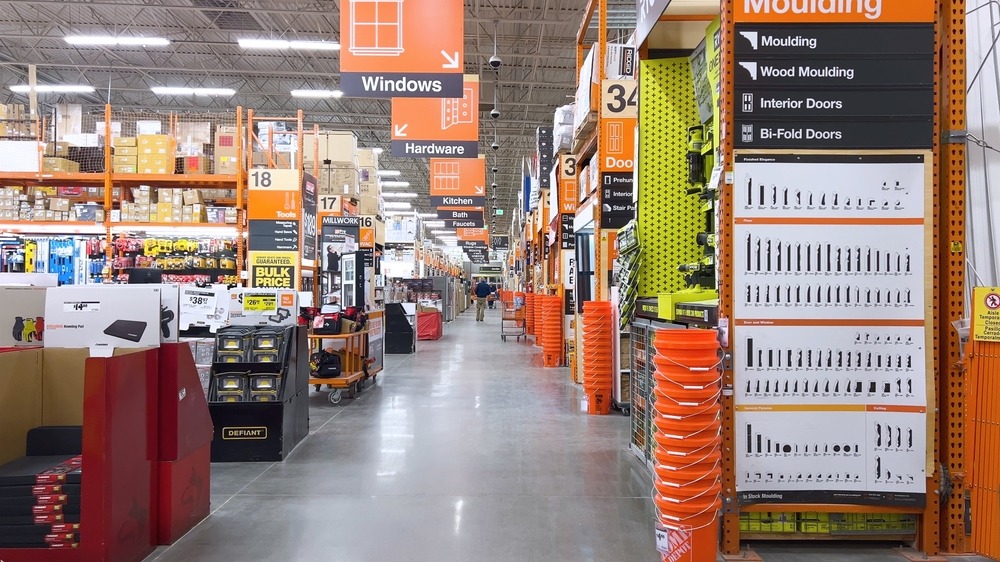Home Depot’s New Return Policy Sparks Customer Outrage
Home Depot, one of America’s largest home improvement retailers, has recently implemented significant changes to its return policy, sparking backlash from customers who are frustrated with the new restrictions. While the chain has long allowed returns without a receipt by verifying identity through a valid ID, the company’s new approach limits such returns, causing confusion and dissatisfaction among shoppers. In particular, a recent incident highlighted by a disappointed customer has drawn attention to the stricter measures that have angered many loyal shoppers.

The Change in Home Depot's Return Policy
Home Depot’s previous return policy allowed customers to return items without a receipt, provided they presented a valid government-issued ID. This system was typically used when receipts were lost, or when customers didn’t initially have a receipt at hand but still wished to return or exchange an item. In these instances, the store would often issue refunds in the form of store credit.
However, recent reports indicate that Home Depot has begun enforcing stricter policies regarding returns without receipts. Under the new policy, there are now more limitations on how customers can return items without proof of purchase, and those seeking a return or refund without a receipt may face harsher scrutiny. In particular, some customers have reported being denied refunds altogether, even when the products were defective or purchased from the store.
Customer Frustration Over Denied Refunds
The issue came to a head in a viral incident shared on social media, where a customer, identified only as "Tracy," expressed her frustration after being denied a refund for a set of faulty Christmas lights. According to Tracy, the lights she purchased from Home Depot stopped working after just one use. When she returned to the store to request a refund, she offered her driver’s license as identification but was still denied a refund due to the lack of a receipt. Even though she was willing to accept store credit, Tracy’s request was rejected under the new return policy.
The incident has caused significant outrage among customers, with many taking to online platforms like Reddit and Twitter to voice their discontent. Tracy, in particular, vented her frustrations on social media, claiming that this new policy was a dealbreaker for her and that she would no longer shop at Home Depot.
“Just lost a huge customer. I can’t believe this,” Tracy wrote, highlighting the anger many consumers feel about the change. “Home Depot has always been my go-to, but now I won’t be going back.”
Her post quickly gained traction online, with hundreds of other shoppers sharing similar grievances. Many voiced their frustration over what they see as an unreasonable policy that disproportionately punishes loyal customers who have a legitimate reason for not having receipts, such as losing them or making large purchases over time. Others expressed concern about the shift in Home Depot’s customer service approach, questioning whether the company was prioritizing profit over customer satisfaction.
Why Are Customers Upset?
The main source of frustration for many consumers lies in the fact that Home Depot’s new policy feels like an inconvenience to those who frequently shop at the store, especially those who might misplace receipts or forget to keep them. Consumers often have a reasonable expectation that they can return faulty items, particularly if they are purchased from a reputable retailer like Home Depot. However, under the new policy, these customers may find themselves unable to exchange defective products, which undermines trust in the company.
Additionally, Home Depot’s change has raised questions about the retailer’s treatment of long-term customers. Many shoppers feel that they should be entitled to a more lenient return process, particularly if they are frequent shoppers who regularly spend money in-store or online. The frustration stems from a perception that the company is now taking a more rigid stance, penalizing loyal patrons who are simply seeking to return items that do not meet their expectations or are faulty.
Some customers argue that the new return policy is part of a broader trend toward tightening return rules at major retailers, which have been dealing with increasing levels of return fraud. According to reports, some companies have faced challenges with returns being used as a loophole for fraudulent activity, leading them to implement more restrictive measures.
However, many argue that a more balanced solution could have been found, one that maintains protections against fraud without alienating genuine customers.
The Broader Implications for Retailers
Home Depot’s change in return policy has ignited a broader discussion about how retailers are approaching customer service and the future of returns. While the rise of online shopping and e-commerce has made returns easier for consumers, it has also led to increased abuse of return policies, including fraud and “wardrobing,” where customers buy items, use them briefly, and then return them.
Retailers, including Home Depot, are now taking a harder stance on returns, especially in-store returns without receipts. While these measures are necessary to prevent fraud, the trick is finding a balance that protects the business while still providing reasonable service to customers. Many customers feel that Home Depot’s stricter return policy overreaches and harms the retailer’s reputation among loyal shoppers.
A key point of tension in the debate is the growing sense that large retailers like Home Depot, with billions in revenue, could do more to accommodate consumers without unnecessarily complicating return processes. Many argue that companies like Home Depot can still take steps to reduce fraud while offering leniency for returning faulty or unwanted products. Perhaps a more customer-focused approach could involve offering store credit for returns without receipts, with certain safeguards in place to deter fraud.
Possible Solutions for Home Depot
To restore customer trust and improve the return experience, Home Depot might consider revising its return policy to offer a more flexible solution. One possible solution could involve introducing an online system for tracking receipts, allowing customers to return items even without the physical receipt, provided they are able to verify their purchase through the store’s system. This could significantly ease the return process and improve customer satisfaction.
Additionally, offering a more transparent explanation of the return policy—clearly outlining when receipts are required and when exceptions are made—could help alleviate confusion and prevent consumer dissatisfaction. Clear communication about the return process and exceptions for faulty products would allow customers to feel more confident in their interactions with Home Depot and ensure they understand the conditions under which they can return goods.
Lastly, Home Depot could consider providing incentives for customers who are frequent shoppers, such as offering longer return windows for registered members, loyalty members, or repeat customers. This would be a great way to reward customer loyalty while still protecting the retailer against return abuse.
Related: Home Depot's Latest News: Corporate Shifts, Tiny Homes, Refund Controversy & More
Conclusion
Home Depot’s recent return policy changes have caused a stir among customers, many of whom feel frustrated by the perceived rigidity of the new rules. While it’s understandable that retailers need to combat fraud, it’s important to balance fraud prevention with customer satisfaction. The backlash from consumers indicates that Home Depot’s move to tighten its return policy may be counterproductive if it alienates its loyal customers.
As more shoppers voice their dissatisfaction, it will be important for Home Depot to listen to their concerns and potentially revise its return policy to provide a better customer experience. By finding the right balance between protecting against fraud and ensuring customer satisfaction, Home Depot can continue to be a trusted retailer for years to come. For now, the controversy over the policy change serves as a cautionary tale for other retailers looking to tighten their return policies in the future.










